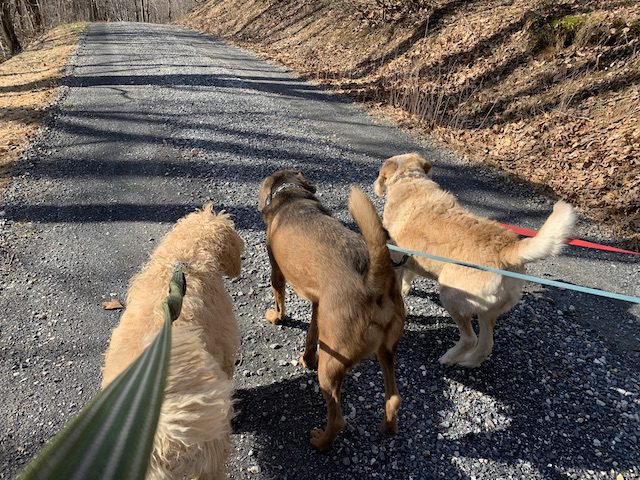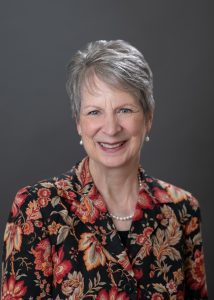
“I’m writing about the pandemic and would like your opinion,” I said to my neighbor Shirley [name changed] as we walked. We had three dogs on leash—mine and two from another neighbor who is unable to walk much.
“Oh dear, I don’t know if I have anything to offer, but I’ll try.” I noted Shirley’s humility and kindness. The mile-long mountain road to the mailboxes and back was good exercise and gave Shirley a break from caretaking. Her middle-aged, partially disabled daughter could watch over Shirley’s elderly mother for short periods of time.
Cato, Slick and Curly veered to the side of the road to investigate a smell and relieve themselves. Shirley and I pulled out the poop bags we routinely carried. “Our lives are pretty quiet here in retirement,” I said, “and things didn’t change much with the pandemic, except we saw family and friends less, and neighbors more.”
We’re a rural neighborhood of ten, full-time homeowners: three families with adults in their thirties, forties, and fifties, and seven families with adults in their sixties, seventies, eighties, and nineties. I thought about the few times Keith and I had seen our family in the past two years—even fewer times for friends—and knew our neighbors had experienced the same isolation. A quick internet had brought up articles and research studies, documenting the stay-at-home challenges across the nation, and how people coped.
“I’d like to think since the pandemic we watched out for our neighbors more and helped them,” Shirley said. At the mailboxes, we commanded the dogs to sit, gave them treats, and turned to climb the mountain road toward home. Along the way, we talked about neighborhood meetings, potlucks, and picnics—all outside—taking meals and care baskets to those recovering from non-COVID-related health issues, and grocery shopping for those who were sick. “And instead of just waving as we pass one another on the mountain road, we stop to visit,” Shirley said. We also call and text one another and make “front yard” visits. Neighborhood interaction helped fill the gap for people geographically distant from their families.
Shirley and I walked Slick and Curly through our neighbor’s garage and into his front hallway. The dogs bounded up the stairs as soon as they were unleashed. Our neighbor was waiting at the top. “The boys did fine,” we called up to him. “How are you doing today?” While listening, we observed his state and that of his house in case we needed to alert his daughter who lives several hours away. She checked on him daily but asked us to be her eyes and ears.
As Shirley and I neared home, I let Cato off leash to run a bit. “The pandemic has made it harder for families to take care of their loved ones,” I said.
Shirley nodded. “I wish I could help more, but it’s difficult to know where the line is between helping and interfering. We’re not their family.”
“No, we aren’t, and neighbors walk that fine line every day. Shall we walk it again tomorrow?”
This post appeared on The Perennial Gen last Friday: https://theperennialgen.com/loving-our-neighbors-and-their-dogs-as-ourselves/



Same here Carole. A rural area and no one in the neighborhood, maybe a few in the county changed their lifestyle much.
It’s good to be sensitive to people who are cautious, scared or have family that is. Navigating storms with God’s perspective calls for much love and wisdom. We were overly exposed several times from helping people who needed it as they were sick. We just let people know for a few days.
I thank God for good neighbors like you, Gary. God bless you! -C.D.